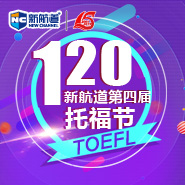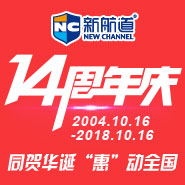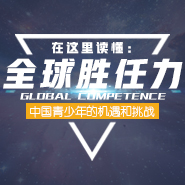2010年8月21日托福机经英文版原文
2012-01-19 00:00 供稿单位: 互联网
出国英语考试有哪些 雅思6.5是什么水平 雅思阅读评分标准 托福阅读评分标准 雅思和托福的区别
2010年08月21日(北美機經)
1. 古埃及象形文字。先說古埃及象形文字是Arabic的一個分支,然後開始講這個語言的興衰!興是因為當時宗教界都用這門語言,衰是因為後來人們發現這個語言太麻煩,太晦澀難懂,再加上另一個文明的興起(忘了是希臘還是哪個),使這門語言被徹底邊緣化。然後講現在人們來研究它,講了一個人的研究成果。
Development of Egyptian hieroglyphic writing
A standardized form of hieroglyphs developed rapidly in the earliest years of Egypt’s Early Dynastic Period (2920 bc-2575 bc)). Little change in the system took place during the following 2,600-year period of Egyptian civilization.
Hieroglyphs were very time consuming to create, so the Egyptians developed a cursive script called hieratic in the early years of hieroglyphic use. The characters of the hieratic script were based on the hieroglyphic symbols, but they were simplified and little resembled their hieroglyphic origins. Hieratic was used for the bulk of writing done with reed pens and ink on papyrus. In the 7th century bc the Egyptians began using a script called demotic, which was even more simplified than hieratic. After this point hieroglyphs continued to be used in carved inscriptions on buildings, jewelry, and furniture, but hieratic was used for religious writings, and demotic for business and literary texts
A major change in hieroglyphs took place under the Ptolemaic Dynasty (305-30 bc), when Egypt was ruled by a Greek dynasty. During this time the Egyptians created many new glyphs. Priests were especially interested in writing religious texts in more mysterious and complex manners. The priests often used new glyphs to form specialized codes and puns understood only by a group of religious initiates. After the Romans conquered Egypt in 30 bc, the use of hieroglyphs declined, and eventually their use died out. The last firmly datable hieroglyphic inscription was written in ad 394.
After the fall of ancient Egyptian civilization in 30 bc, the meaning of hieroglyphs remained a mystery for about 1,800 years. Then, during the French occupation of Egypt from 1798 to 1801, a group of French soldiers and engineers uncovered a large stone now known as the Rosetta Stone. This stone bore an ancient inscription containing the same text written three different ways—in hieroglyphs, in the demotic script, and in ancient Greek. The stone was taken to Europe, where scholars translated the ancient Greek and used the information to decipher the other two texts.
French Egyptologist Jean Fran?ois Champollion was the first modern person who was able to read hieroglyphs. It had been noted that certain groups of hieroglyphs on the Rosetta Stone were surrounded by a carved oblong loop. The loop, called a cartouche, separated the names of kings and queens from large bodies of text. Champollion knew enough of hieroglyphs to confirm that the cartouches on the Rosetta Stone contained the name of one of the Greek rulers of Egypt, Ptolemy V. As Champollion examined more cartouches, he observed that some of the glyphs matched between Ptolemy’s cartouche and the other cartouches. Champollion determined that certain glyphs in the cartouches phonetically spelled out the names of certain Greek rulers of Egypt. Using this knowledge and an ingenious reading of ideograms in other cartouches, he deciphered the names of the native rulers Ramses and Thutmose.
Champollion’s discovery showed him definitively that there were two categories of glyphs, phonograms and ideograms. Champollion then began to use this information to decipher the large body of Egyptian hieroglyphs on objects that had been taken to Europe. In 1828 he led a group of artists and architects to Egypt with the goal of drawing pictures of tombs, temples, and monuments and copying down as many hieroglyphic inscriptions as possible. He later translated the hieroglyphs from the drawings. The work of deciphering the hieroglyphs went on after Champollion’s death and continues up to the present day, continually providing new information about life in ancient Egypt.
2. 日本人種水稻。先說日本人的水稻本來就種一季,後來人口增加了,而且灌溉水準有所提升(水輪技術;把雨季的水存起來旱季用的技術;還有什麼水被太陽曬過之後溫度較高,用它灌溉可以催熟水稻),導致可耕種面積增加,所以後來日本人開始一年種兩季。後來又講到很多富人家都有自留地,但是他們不是毫無節制地增加自己的土地面積,而是只要夠養活一家老小就不再擴張了。
3. 跳槽論。講美國人天天各種跳槽,一般2個原因:一個是在大城市中心的employer容易跳槽,因為很多公司都在那,他們跳槽連家都不用搬。第二個原因忘了。然後和歐洲比,為什麼德國,日本跳槽的少?因為他們的房子供不應求,離新東家附近的房子都找不到,更不用提跳槽。然後又分析高跳槽率的優缺點。優點是市場更加靈活,人們易於找到最適合自己的工作。缺點是跳槽率高,公司都懶得深層次地培訓員工,因為培訓了也是為他人做嫁衣,所以勞動力水準比較低
4. 19世紀的女人在藝術界被各種排斥,學校不收,更談不上展出藝術作品。後來英國率先開始興辦女人藝術學校,培養女藝術家。然後法國接過英國的接力棒,成為世界藝術殿堂,女人們可以和男人一樣上學,展出自己的作品。然後舉了幾個例子說那些人是這個時期培養出來的女藝術家。
詞彙題:foster;profile = view from side;impetus = motivation。
新航道国际教育集团提供专业的雅思培训、托福培训、GRE培训、SAT培训、剑桥青少英语培训等,为广大学子“开启英语成功之道”

- 新航道,英语成功之道。时间获取新航道英语学习资料和新鲜资讯,请在微信公众账号中搜索「新航道英语」或者「xhdenglish」,或用手机扫描左方二维码,即可获得新航道每日精华内容推送和英语学习经验分享,并参与新航道举办的各项活动。
精彩专题
更多视频荟萃
更多
-
120托福节之李老师:你的托福阅读领路人!
时长:01-18

-
120托福节之冉维:你的托福写作领路人!
时长:01-18
托福预测
更多
-
2017年托福听力考情分析及2018年备考建议
2017 年全年的48 场新托福考试已经落下帷...
- 2017年托福口语考情分析及2018年备考建议
- 2017年托福阅读考情分析及2018年备考建议
- 2017年托福写作考情分析及2018年备考建议(下)
- 2017年托福写作考情分析及2018年备考建议(上)








